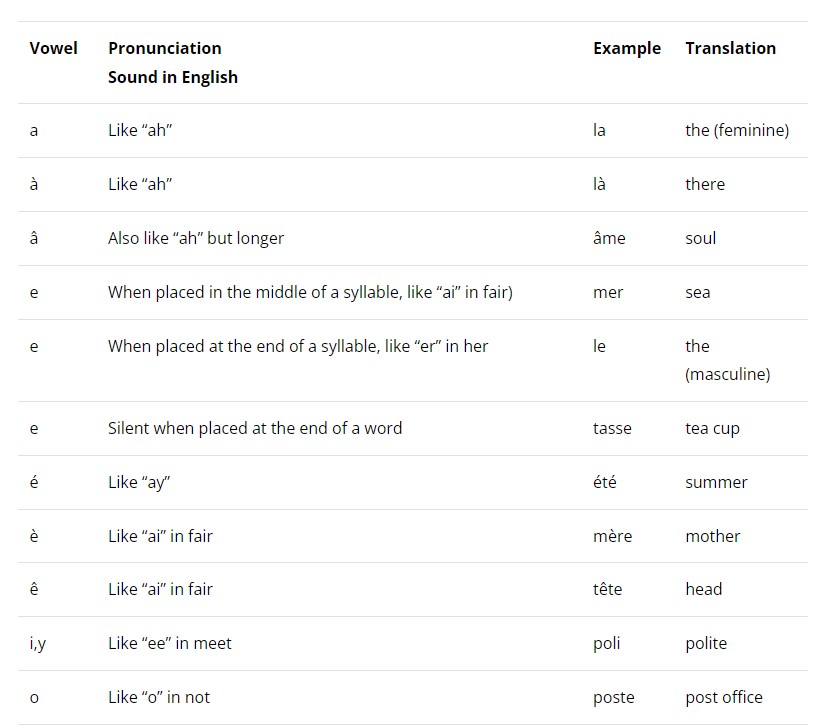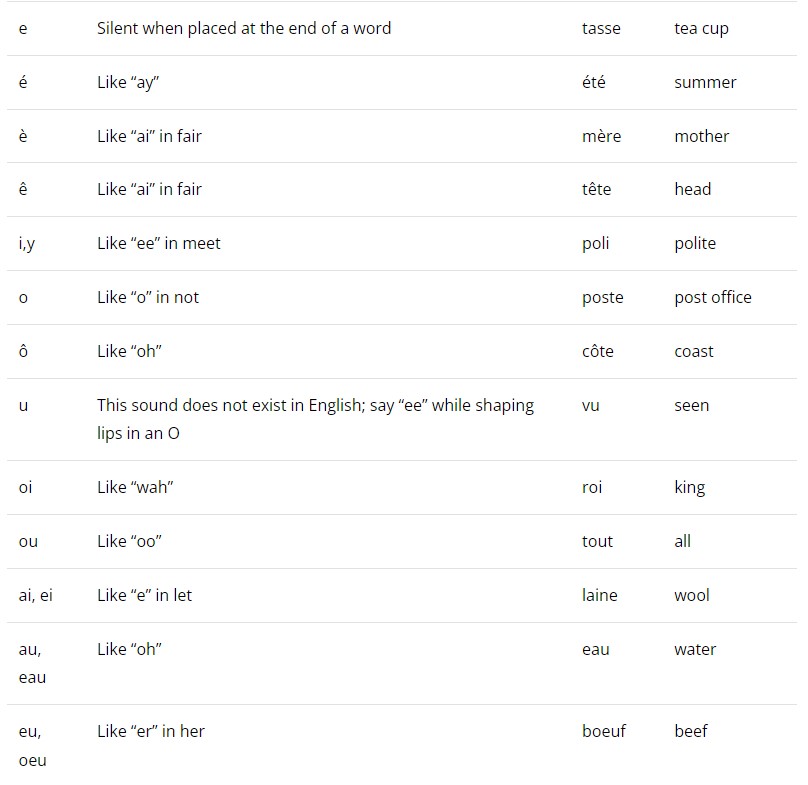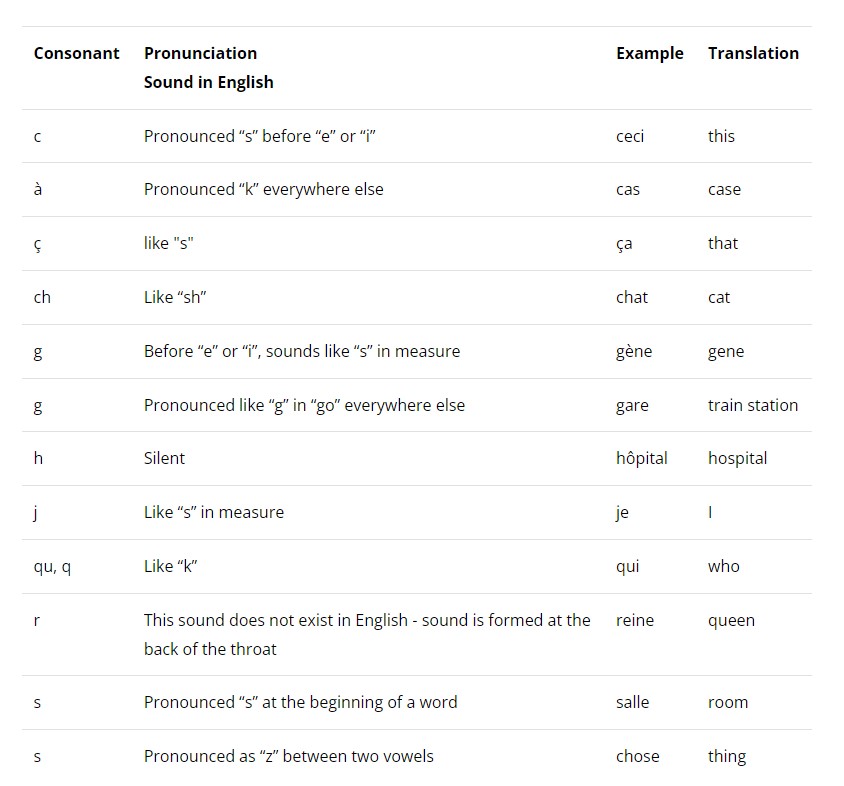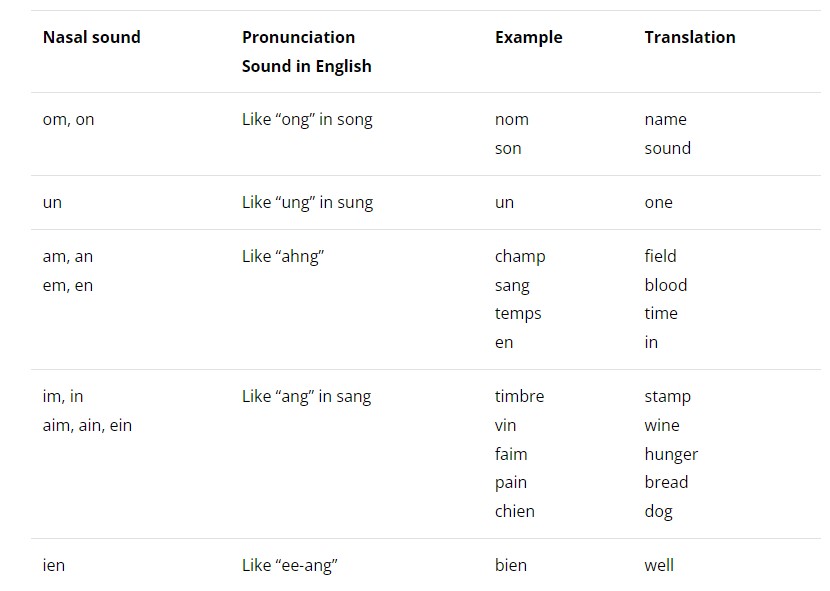How to pronounce the French alphabet
Let’s start with some good news: French uses the same 26 letters found in the English alphabet, although, as you might expect, the French pronunciation is a bit different. This is especially true for the letters “k” and “w”, which are rarely used in French words and are mostly found in words borrowed from other languages. Also, look out for the French letters “j” and “g”, whose pronunciation are opposites in English. Listen to the spelling of some characters from our French course Frantastique to familiarize yourself with the French alphabet.
Now for the bad news: the French vowels “a”, “e” and “o” can take accents that change the way the letters are pronounced and the corresponding sound that is made. Accents can be tricky, but with time and practice you will master them like a native French speaker.
Pronuncing French vowels
For beginners, the subtle differences between the vowels “e”, “o” and “u” are often quite difficult to distinguish. This is because French has six vowel sounds which don’t exist in English, making their pronunciation difficult. It's normal to have a hard time hearing the difference between “é” and “è”, or struggling to make the “u” sound at first. It is perfectly normal and your pronunciation will improve over time. Exceptions can also occur when certain vowels are placed together. Take a look at the chart below to see the French pronunciation rules for all vowels and vowel combinations.


Pronouncing French consonants
For the most part, French consonants are pronounced just like their English counterparts, but of course, France has rules, and then exceptions to those rules. Refer to the chart below for the basic rules of French consonant pronunciation.
In general, consonants found at the end of a word in French are not pronounced, except for the consonants found in the word “c”, “r”, “f” and “l” - you can remember this by thinking of the word "careful". Truc and fil, two exceptions to the final consonant rule, are examples of words in which the consonant is pronounced.The double “l” in French can also be tricky as it has two pronunciations, either as a single “l” or as a “y”. Although there are some exceptions, the general rule is that “ll” is pronounced as “y” when there is a vowel before “ill”. In words such as paille, feuille, veille, cuillère and bouillir, for example, the double “l” is pronounced like a “y”. With all other vowels, “ll” is pronounced like “l”, such as in salle, belle, folle and pull.
Just like the “k” before “n” is silent in English, the “g” before “n” is also silent in French. The combination of “g” and “n” make a long “n” sound in words such as Espagne or espagnol.
English speakers will also be tempted to pronounce the “s” at the end of plural nouns, like in English, but remember consonants at the end of words are usually not pronounced unless they are “c”, “r”, “l” or “f”.

Nasal sounds in French
The French language has many nasal vowels, while English has mostly oral vowels. A nasal sound is formed when the air escapes from the nasal passage instead of the mouth when speaking. Out of the six French vowel sounds that are not present in English, three of those are nasal vowels. Below is a quick guide to the rules for nasal vowels in French.

French liasons
A grammatical liaison is just as dangerous as any other - it refers to the union of two neighboring words in a sentence, producing a sound that wouldn’t otherwise be pronounced. Liaisons occur when the first word ends in a consonant and the second word begins with a vowel (or a silent “h”). Some examples below (all examples can be found here).
Vous achetez (you buy)
Vous en avez (you have some)
Un homme (a man)
Les anciens étudiants (the former students)
Trop important (too important)
Bien assez tôt (soon enough)
Vient-elle? (Is she coming?)
The pronunciation of some letters change when part of a liaison. Some examples below (all examples can be found
here).
“d” becomes “t”: un grand enfant
“f” becomes “v”: neuf heures
“s” and "x" become “z”: beaux yeux
“ein” and “ain” become “eine” and “aine”: un lointain ami
What about French phonology?
It's the question on everyone's lips, obviously. French phonology is written, like all other Latin-based languages, using the International Phonetic Alphabet or IPA. Ever wonder what those weird letters are in dictionaries that come after the word but before the definition? It’s the IPA spelling of the word, which gives instructions as to its correct pronunciation. When in doubt of a French word’s pronunciation, all you need to do is find a dictionary and look it up!
How to improve your French pronunciation
“Practice makes perfect” is a phrase you have probably heard time and again. In the case of French, it holds true - the best thing you can do to improve your French pronunciation is practice. It’s important to hear French regularly and to study the facial expressions of native speakers to see how sounds are produced. This means listening to podcasts, radio and/or watching TV in French. Memorize, repeat and sometimes exaggerate what you hear, and when in doubt refer to French pronunciation lessons like this one.
It’s also important to incorporate speaking into your daily routine since you have to train your mouth as much as you have to train your mind. There are many ways to build up your mouth’s muscle memory: Have natural conversations with native speakers, learn French songs and sing along, or test your tongue with a tongue twister
